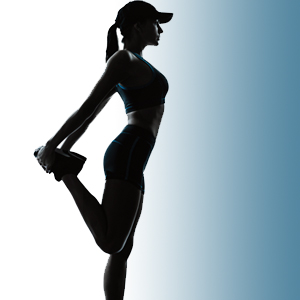All about Stretching

Along with your workout, stretching has many benefits and should be an integral part of your routine. Some of the many benefits of stretching include reducing the chance of injury, reducing muscle tension and promoting flexibility, improving posture and circulation, and decreasing muscle stiffness. Two popular types of stretching are static stretching and dynamic stretching. Static stretching involves stretching a muscle beyond its normal limits and holding it in a particular position. Dynamic stretching is the more active type, where the movement is not held in any one position.
Unfortunately, when it comes to stretching, there seems to be a lot of confusion as to when is the best time to stretch. Look around any park, fitness center, or jogging track and you will find someone bouncing up and down and stretching. While that person might think that stretching in such a ballistic manner is beneficial before a grueling workout, recent research suggests just the opposite! In fact, according to the American Council on Exercise, “Research exists to suggest that stretching prior to an athletic activity may decrease power output resulting in diminished physical performance.”
Furthermore, “some group fitness instructors incorporate stretching at the end of the warm-up period of an exercise class. However, this practice can be somewhat counterproductive since stretching during the conclusion of the warm-up will cause a drop in the participants’ heart rates prior to the start of the training segment of the class. Consequently, the most appropriate time to stretch tends to be at the end of a group exercise class. Stretching at the end of class (as part of the cool-down segment) is recommended because it is safer and more effective to stretch muscles that are properly warmed and, therefore, more pliable. Also, it helps to further facilitate post-workout recovery.” Interestingly enough, according to experts, when stretching is done before beginning exercise, the body assumes that it is at risk of being overstretched. It therefore compensates by tightening and tensing, limiting movement and as a result, increasing the likelihood of an injury or a pulled muscle.
In order to prevent injury, it is important to note that muscles must be adequately warmed up first prior to any stretching movement. Avoid stretching muscles before beginning an activity when they are cold and not properly warmed up. For example, to prepare for a run, don’t start out stretching first before the run and then take off running. Instead, walk for about five to ten minutes at a brisk pace to adequately warm up, thus reducing the chance of injury. Then, slowly begin your run. To improve flexibility and reduce your chances of injury, perform stretching at the end of your run when the muscles are properly warmed up.
According to Jessica Matthews, MS, E-RYT, Exercise Physiologist for the American Council on Exercise, “Research suggests that beginning your workout with a dynamic warm-up is a safer and more effective way to prepare the body for exercise. Dynamic stretching, which involves active range of motion movements that tend to resemble sport or movement-specific actions, lengthens the fascia (the connective tissue around the muscles), increases core body temperature and functionally prepares the body for the activity to come. Examples of exercises you can incorporate in a dynamic warm-up include bird-dog, bear crawl, and dirty dog.”
Here are some additional stretching guidelines: stretch only after an adequate warm-up of five to ten minutes or more. Never stretch cold muscles as this can increase the chance of injury. Perform static stretching by holding each stretch for at least ten to thirty seconds till the point of mild tension. Never bounce while holding a stretch or perform ballistic stretching. Don’t push too far, and remember to take your time and breathe during the stretch. After the initial stretch of thirty seconds, relax the muscle and repeat again for a total of two to three times for each muscle group.
Remember that stretching before an activity might be counterproductive; however, when performed after an activity, it might improve range of motion and flexibility and simply just feel good!
[Aarti Patel serves as the columnist for Fitness Lifestyle. She has a B.Sc. in Health Information Administration and is certified by the American Council on Exercise as a Personal and Group Fitness Instructor, and Lifestyle and Weight Management Coach. She can be reached at (404) 376-5655; info@aartifitness.com. This column rotates monthly along with the Ask the Doctor column by Gulshan Harjee, M.D.]
Enjoyed reading Khabar magazine? Subscribe to Khabar and get a full digital copy of this Indian-American community magazine.
blog comments powered by Disqus










